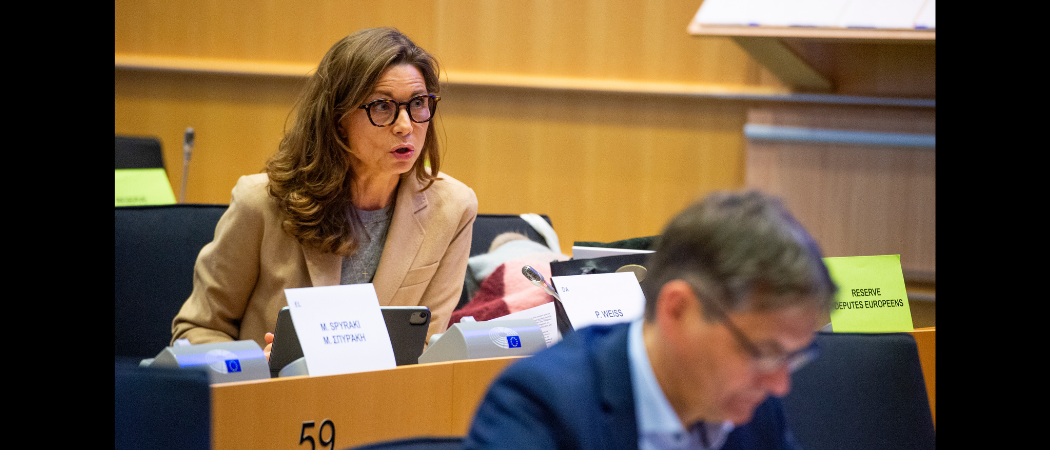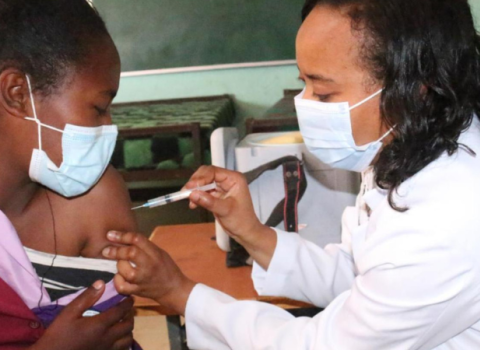It is promised as the most important update for more than twenty years, but tensions are high as MEPs struggle to reach a compromise over the EU’s proposed pharmaceutical reform

MEP Pernille Weiss of EPP. Photo: Eric Vidal / European Union
As the clock ticks down on the current term there are significant differences of opinion to reconcile if new pharmaceutical legislation is to be agreed before proceedings are suspended for the 2024 elections.
Tensions are high in the European Parliament as MEPs scrutinise proposed – and opposing - changes to the Commission’s draft, that have been put forward by rapporteurs Pernille Weiss of EPP and S&D’s Tiemo Wölken.
The reform has the objectives of stimulating innovation and investment in the sector, whilst at the same time guaranteeing drug supplies and ensuring equitable access across the EU.
Last month, Tomislav Sokol, EPP’s shadow rapporteur for the file, told a Science|Business conference the two main parties were “diametrically opposed” and the reform would not be adopted ahead of the European elections.
As things stand, there are no dates set for the next negotiations, with a spokeswoman for the ENVI committee telling Science|Business today that the committee is aiming to vote on the proposals in the spring, but this will depend on how talks progress in the coming months.
The reform will shape one of Europe’s most important industries over the next twenty years. It is not only a case of access to medicines, pharma is a source of hundreds of thousands of well paid jobs, one of the largest private investors in research and the engine for translating much publicly funded biomedical research through to market. So the stakes are high, but so far there has so far been little willingness to compromise from either side.
In 2010, Europe accounted for 37% of global R&D; in 2020 that had dropped to 32%. Research on the effect that new rules would have on the competitiveness of the sector commissioned by the European Federation of Pharmaceutical Industries and Associations, published last month, projects that by 2030 that will fall to 25%, and by 2040 to just 21%. Meanwhile, China’s contribution is expected to leap from 2% in 2010 to 17% in 2040.
The most public disagreement is over the Commission’s plan to reduce the length of protection for clinical trial data from eight to six years, unless drugs are launched in all member states within two years of getting marketing approval from the European Medicines Agency (EMA). Currently, there is a ten fold variation in time to access new drugs across the EU.
Clinical trial data exclusivity was originally introduced because the time taken to get a drug from initial discovery and through development and commercialisation means they often have very limited patent protection by the time they reach the market.
Weiss has proposed extending exclusivity to nine years without conditions, to provide certainty and incentives to drug developers.
“The directive must present a framework for rewarding innovation which is attractive to the global pharmaceutical industry,” she says in her report. Opponents fear this would have a negative impact on access to medicines, by delaying the entry to market of generic and biosimilar drugs.
Geographic inequalities
A recent report commissioned by the panel for the Future of Science and Technology (STOA), Parliament’s point of access to independent scientific advice, took a similar stance to the Commission, concluding that the current length of protection should be reduced.
The report warns however that offering an extension if a drug is launched in all member states is not the answer to geographic inequalities. The authors share the position of the pharma industry, which says this would penalise innovators for the time it takes for national agencies across the EU27 to reach decisions on pricing and reimbursement.
The Commission proposes several options for the extension of market exclusivity for branded drugs, but the STOA report supports just one, when a drug is repurposed and authorised to treat a different disease following further clinical trials. To ensure equal access in countries with small markets that are less commercially attractive, STOA suggests joint procurement, as was applied in purchasing COVID-19 vaccines.
The evidence points to a “lack of integration of European policies” as one barrier to competitiveness, Laura Magazzini, co-author of the STOA report, told Science|Business. “We are failing to take full advantage of the single market,” she said.
To fill the gap where unmet medical need is not being addressed by the industry, the STOA report recommends setting up a public European infrastructure for pharmaceutical R&D. This “should take care of those areas where the private sector is not investing,” said co-author Simona Gamba.
Discovery and development of antibiotics is one unmet need that could be addressed; it has also been proposed that it could conduct research in the use of psychedelics to treat mental disorders.
Research apart, the Commission is suggesting that one way to fix the failed market in antibiotics would be the introduction of vouchers granting extra market exclusivity. Companies getting approval for a new antibiotic would be given a voucher allowing them to extend market exclusivity of any different drug of their choice for one year. These vouchers also would be tradeable, a move that small biotechs developing early stage anti-infectives say would help them to attract venture capital investors.
Wölken deleted this proposal in his report, saying it would delay the entry of generic medicines to the market and would represent an unpredictable cost for healthcare systems. Instead, he supports the formation of a European Medicines Facility, an independent agency to research and develop novel antimicrobials.
The EPP is in favour of the voucher proposal, which is seen as having more chance of incentivising antibiotic research and ensuring stewardship than the alternative of getting member states to set up incentive schemes in which they would pay a subscription, guaranteeing companies a fixed payment per year for new antibiotics, regardless of the level of use.
A voucher system could be overseen by the EMA, which would decide specifications for antibiotics addressing priority pathogens, and agree and oversee stewardship plans. Setting up the scheme via EU-level legislation would not require upfront funding from national governments.
But the STOA report concludes transferrable vouchers would have a negative effect on access, and the price they fetch would be based on market conditions rather than the quality of innovation. It comes down in favour of the subscription model.
Another key dividing line is the Commission’s proposal for regulatory sandboxes, allowing for the testing of new approaches to regulating novel therapies, intended to futureproof the legislation.
While the EPP believes this will stimulate innovation, Wölken deleted all mention of sandboxes in his report, warning the proposal was vague and would create a parallel regulatory framework.
A debate over the reform in the ITRE industry committee on 28 November hinted a compromise could be reached, with S&D’s Laura Ballarín Cereza’s suggesting sandboxes could be acceptable. “They would need to be used in exceptional cases, be very clearly defined, and always be subject to overview by the European Medicines Agency,” she said.
The olive branch was not lost on Weiss, who said she welcomed the signal from the S&D “that the sandbox is a relevant tool and there could hopefully be a way forward for this concept”.





 A unique international forum for public research organisations and companies to connect their external engagement with strategic interests around their R&D system.
A unique international forum for public research organisations and companies to connect their external engagement with strategic interests around their R&D system.